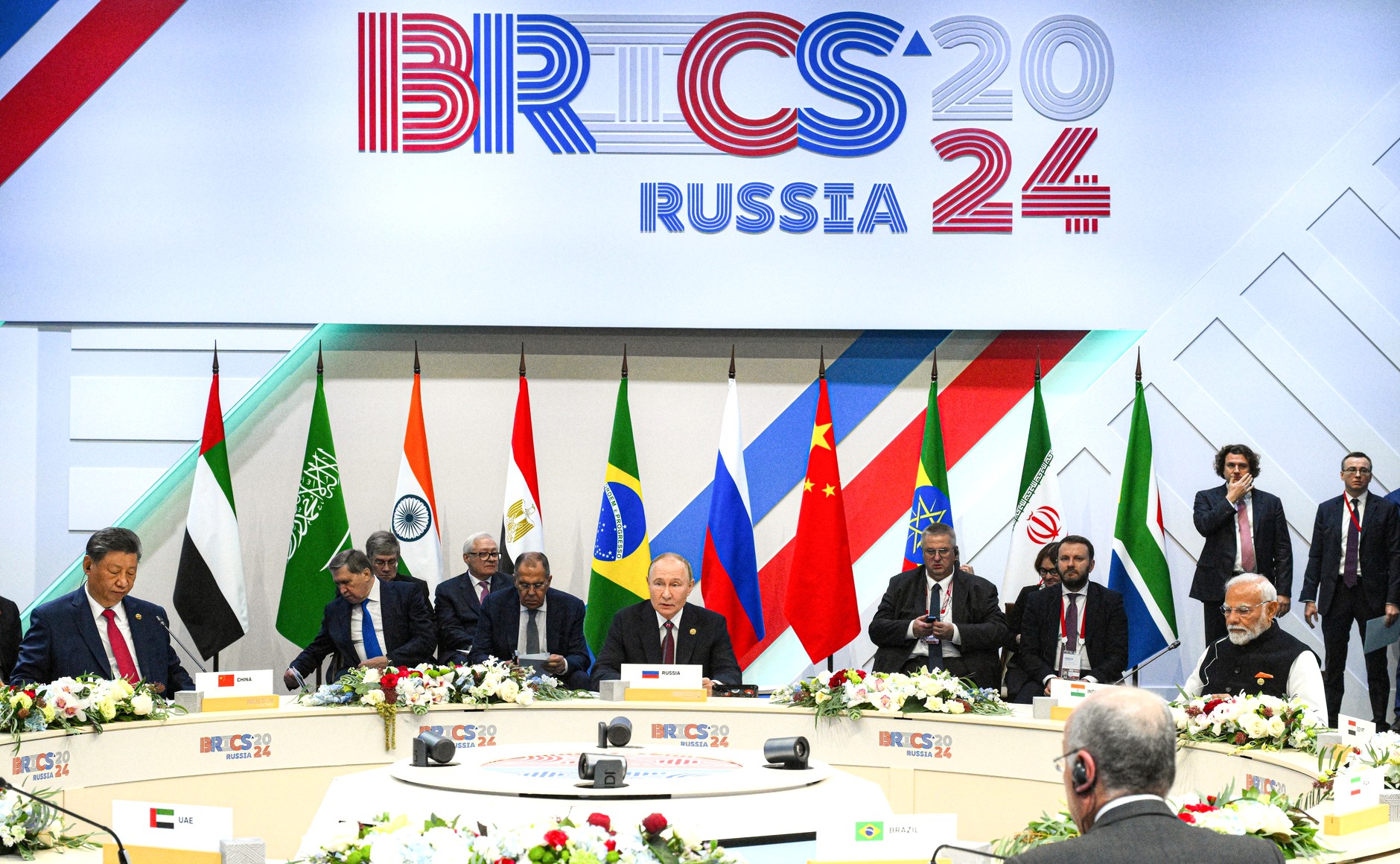
The BRICS (Brazil, Russia, India, China, South America) bloc of nations has recently expanded. Iran, Egypt, Ethiopia, and the United Arab Emirates attended their first summit as member states in 2024 in Russia. Saudi Arabia is still considering the invitation it received to join the grouping.
The term BRIC was first used by Jim O’Neill at Goldman Sachs in his 2001 publication, “Building Better Global Economic BRICs,” but the four countries officially formalized the grouping in 2009, followed by the admission of South Africa in 2010 when the group was renamed BRICS. This group denoted a clutch of rapidly emerging economies with significant political heft in their respective regions that were not part of the established Western ecosystem. The BRICS grouping represents the founding of an alternative global system that does not bind its members in a military alliance like NATO. The group claims to represent a “more representative, fairer international order, a reinvigorated and reformed multilateral system.”
The Power of BRICS
The critical question is whether the expansion of BRICS gives it an economic or political advantage over the G7 or whether the G20 will eventually absorb the BRICS. The recent expansion to include nations such as Iran, Ethiopia, UAE, Argentina, Egypt and Saudi Arabia underlines the BRICS+ commitment to represent the Global South. This recent development effectively divides the G20 into two competing groups: Global North and Global South, or a BRICS+ group and a G7 group.
Since 2000, the G7’s share of global GDP, as measured by purchasing power parity, has declined from 43% to 30%, while that of the five original BRICS countries has increased from just over 21% to nearly 35%. The expanded BRICS also underlines its potential heft in global manufacturing (China, India, Brazil), global energy (UAE, Saudi Arabia, Iran, Russia), and with the formation of the New Development Bank, a possible counter to the World Bank. In fact, the BRICS originated after the 2008 global financial crisis as a reformist bloc aiming to challenge Western dominance in global governance.
Recently, South-South cooperation has become crucial in encouraging global sustainable development. BRICS’ policy in this area is seen in the Indian and Chinese bilateral movements toward the less-developed countries in Africa. India’s development cooperation strategy with Africa is based on African countries’ priorities. It has been argued that new members bring sufficient energy and industrial clout to provide an economic and political alternative to the Western structures. However, this argument is more theoretical than a practical eventuality. Countries like India, Egypt, UAE, South Africa, and Brazil are well connected with the Western democracies. India and China vie for dominance in the BRICS, while Russia, Iran, and China may see the BRICS as a tool to challenge NATO. China hopes to use the BRICS to improve acceptance of its own Belt and Road Initiative which in the last few years seems to be foundering. BRICS+ has potential, but there are too many internal contradictions that need to be overcome before it becomes a cohesive unit.
Net Assessment
The BRICS expansion gives the bloc more economic strength but detracts from its geopolitical power. The prospects that it will rebalance or replace the global order seem far-fetched. The differences in economics, politics, and culture – democracies, autocratic monarchies, authoritarian regimes, and a theocracy – will create difficulties in reaching agreements on any new global governance system.
In contrast, the Western-dominated system the BRICS nations want to move away from is far more homogenous and founded on a well-established rules-based order. The Western democracies do not suffer from the tensions that are likely to engulf the newly expanded BRICS. Moreover, the Western powers could also use the fear of a dominant China to engage important emerging powers like Brazil, India, Indonesia, South Africa, and Vietnam and preclude the further development of BRICS+
Representatives from BRICS member countries attend a summit in October 2024. Credit: Photo courtesy of the Presidential Press and Information Office, www.kremlin.ru, via Wikimedia Commons





